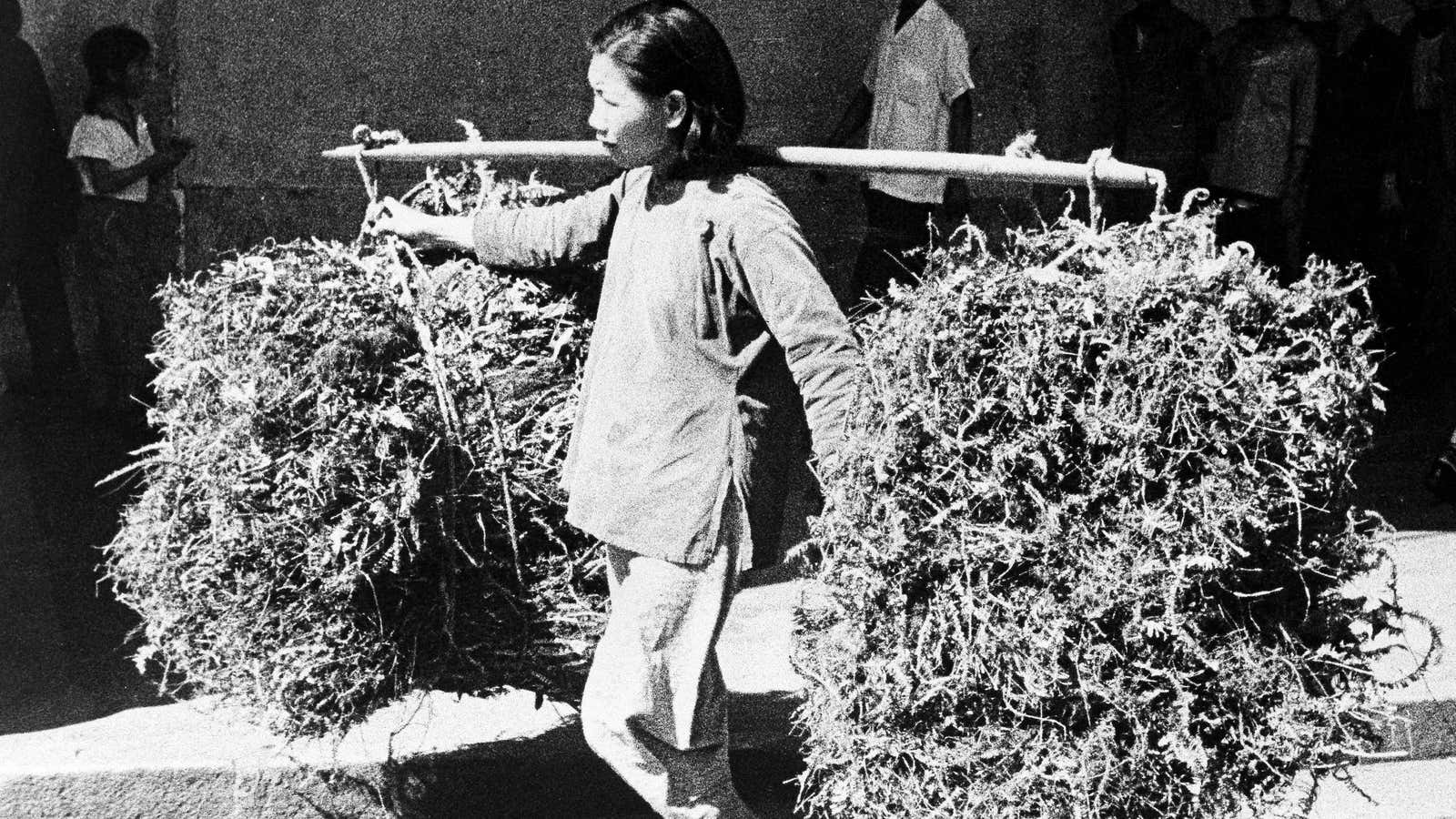Donald Trump’s Twitter feed is playing an increasingly central role in the messy trade talks between the US and China.
He used it on May 5 to announce that the US could increase additional tariffs on Chinese products, after being briefed by US officials that Beijing was backtracking on promises. That threat became policy at midnight May 10. China is expected to retaliate with more trade tariffs of its own.
Today, Trump used Twitter to lay out nothing less than an alternative model for the US economy if the ongoing talks fall apart. It is one that envisions the US government artificially propping up American farms bleeding billions of dollars because of the trade war.
The solution, Trump says, is for US taxpayers to fund government purchases of farm products, which Washington will then donate to other countries:
The proposal bears an uncanny similarity to one key aspect of the economic disaster China suffered through in the late 1950s. Communist Party chairman Mao Zedong tried to transform its agrarian society into an industrial powerhouse while attempting to project an image of Chinese power overseas.
Chinese journalist and historian Yang Jisheng chronicled Mao’s mistakes in Tombstone, a groundbreaking book published in 2008 and immediately banned in mainland China.
Mao’s strategy was built on multiple, tragic miscalculations, including forcing China’s rural citizens into communal living areas and demanding the massacre of birds that ate crops. Trump has yet to suggest this. But his idea of the US sending excess crops overseas as a sign of US power and strength could come from Mao’s playbook.
Mao made his move after the Soviet Union cancelled hundreds of contracts with China in a political dispute, as Quartz’s Zheping Huang wrote, sparking China to pay back debts to Moscow early. That was not “because the creditor asked, but because Mao wanted to show that Chinese Communists don’t rely on others.” Then, “at the same time as people at home were starving, China increased its aid to socialist countries including North Korea and Albania, Yang reported.”
Trump seems to be saying that the US doesn’t need China as an export market, despite the fact that China buys about 6% of US goods sent overseas, and about 17% of farm products the US exports, and that the US is wealthy enough to buy and give away American farmers’ crops.
American farmers are also being hurt by the new Pacific Rim nations trade deal, which lowers the price of goods between 11 member-nations, making US grain and meat more expensive in comparison. Trump pulled out of the deal his third day in office.
China’s Great Leap Forward, as Mao billed it, was a deadly disaster. An estimated 34 million citizens starved to death, sending the country into an economic tailspin that it wouldn’t recover from for more than three decades. Of course, the consequences of whatever Trump urges would be far less dire—for Americans and the world. The modern US economy provides an infinitely stronger foundation than undiversified Chinese economy of the 1950s.
Still, American farmers—and the Congress members who represent them—have stridently stressed they want tariff-free trade, not handouts, just one more reason Trump’s plan is unlikely to ever become reality.
